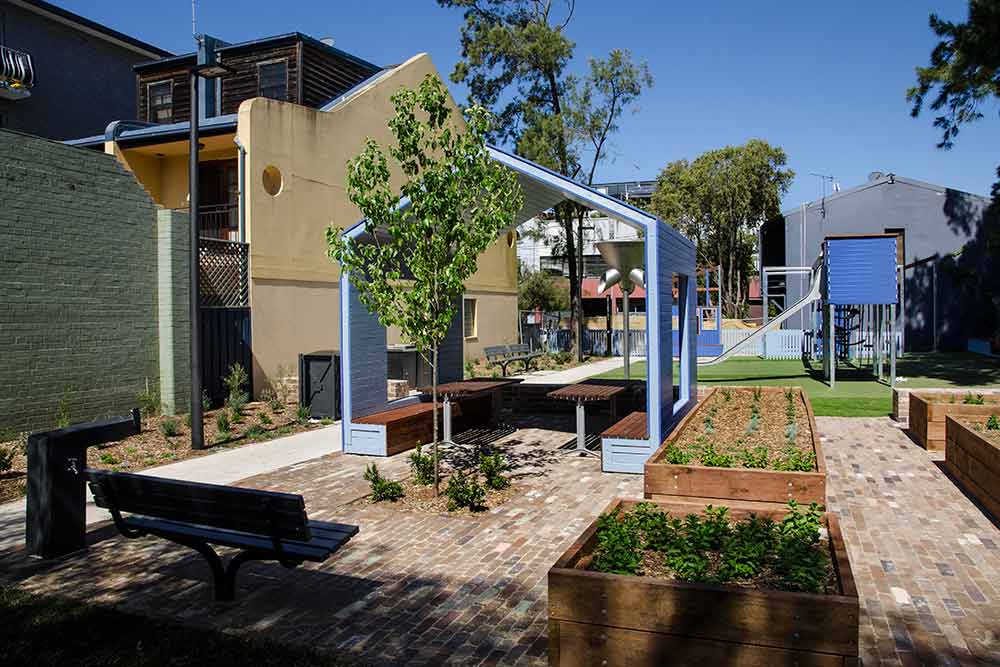
Image: City of Sydney.
One of the City of Sydney’s “pocket parks” or small playgrounds recently won the Parks and Open Space category of the 2016 Australian Institute for Landscape Architects NSW awards.
Chelsea Street Playground in east Redfern won on the merits of its unique design and use of open space in a dense urban area.
City of Sydney CEO Monica Barone said Chelsea Street Playground was a great example of excellent design and community input coming together to create a welcoming urban space.
“The City is working hard to provide well designed open spaces for the growing numbers of people living, studying and working in our area,” Ms Barone said.
“In the dense urban area of east Redfern, Chelsea Street Playground provides valuable open space for local families, pet owners and residents seeking a bit of quiet in the healthy outdoors.”
Opened in November 2015, the park features a new slide and swing set, climbing frame and cubby houses that mimic the neighbouring terrace houses.
The children’s playground is divided from the dog-friendly lawn by a timber picnic shelter, barbecue area and planter boxes. Bike racks and a water fountain are also included in the redeveloped park.
GovNews spoke to Sydney City’s design manager, Chris Thomas to find out more about the success factors for small parks in urban areas.
“Pocket parks in urban areas can be very challenging as they are used by a wide range of people and must work very hard to utilise every square inch of space.
“We design our park with kids in mind and aim to make them as stimulating as possible. The pocket parks work as backyards for people who live in apartments and terraces. It’s often the only time kids experience nature.
“People are very passionate about their pocket parks. So we spend a lot of time talking and engaging with the local community, particularly children, Mr Thomas said.
Pocket Park Tips
- Swings and slides are perennial favourites.
- Seating around playgrounds is also important as parents and carers like to socialize with each other.
- To keep costs down try not to do everything in every park.
- Use off-the-shelf and low-cost materials where possible.
- Don’t try to fit everything in one park – split it up across several parks in one local area.
- Try to devise something that will unify those elements to make it look bigger and grander than what it is.
The City of Sydney local government area has more than 400 parks, including 330 small parks and playgrounds. The City’s parks cover a total area of more than 188 hectares.
AILA NSW also awarded the City of Sydney the highest award of excellence in Parks and Open Space for the Sydney Park water re-use project. The award recognised the integration of landscape architecture with engineering, public art, ecology and play to deliver an open space that benefits the local stormwater system, while enhancing recreational areas.





